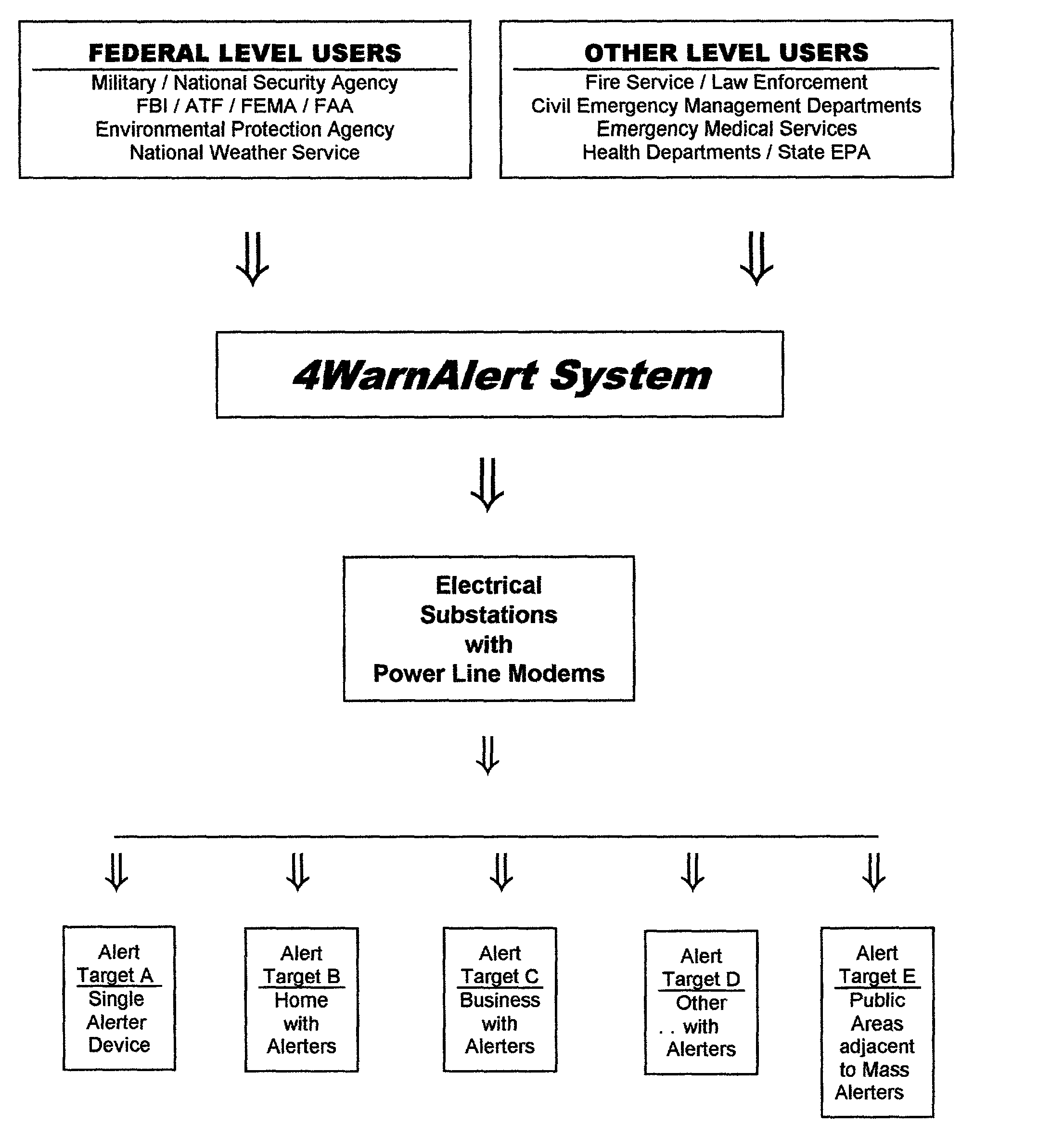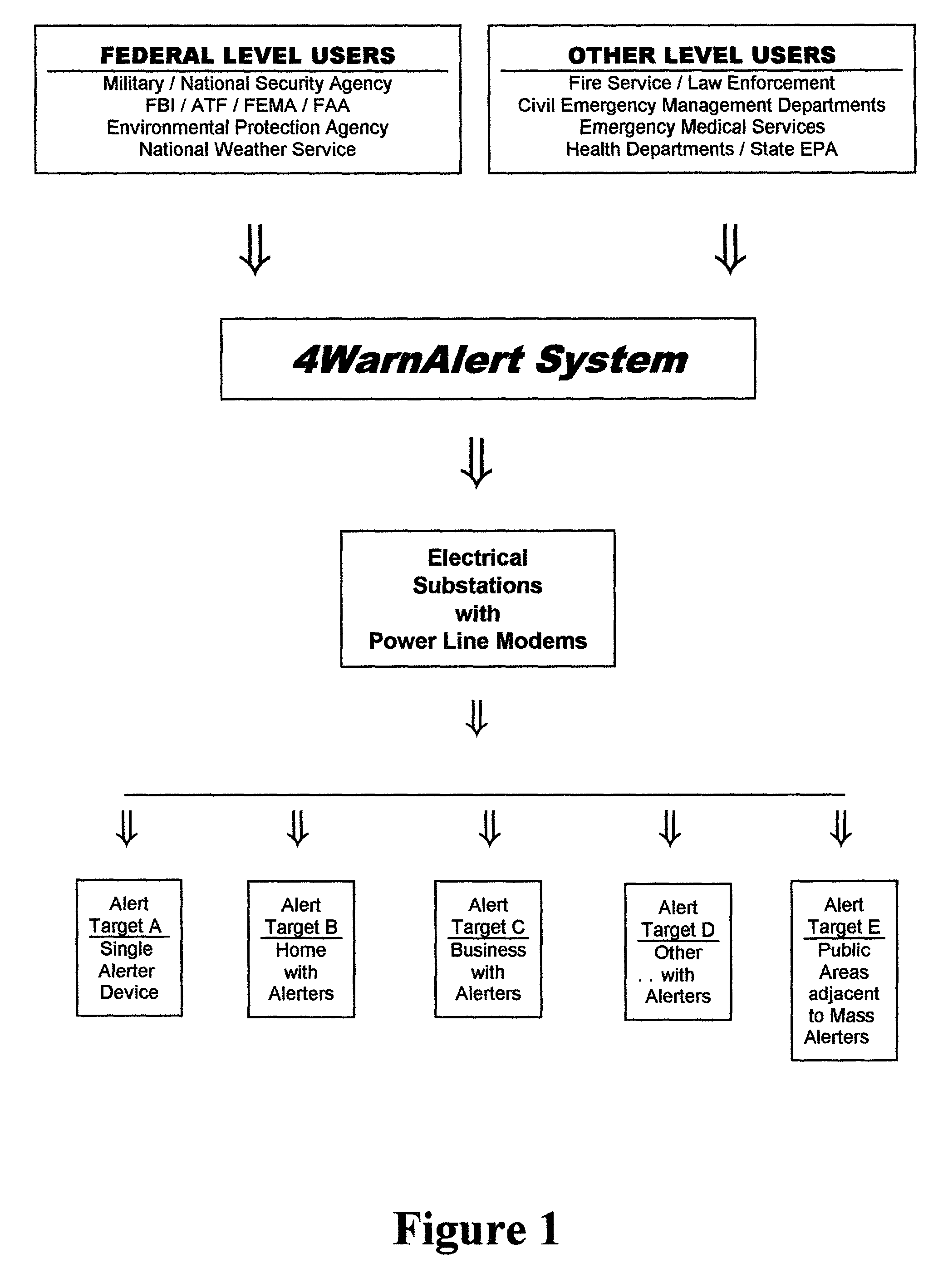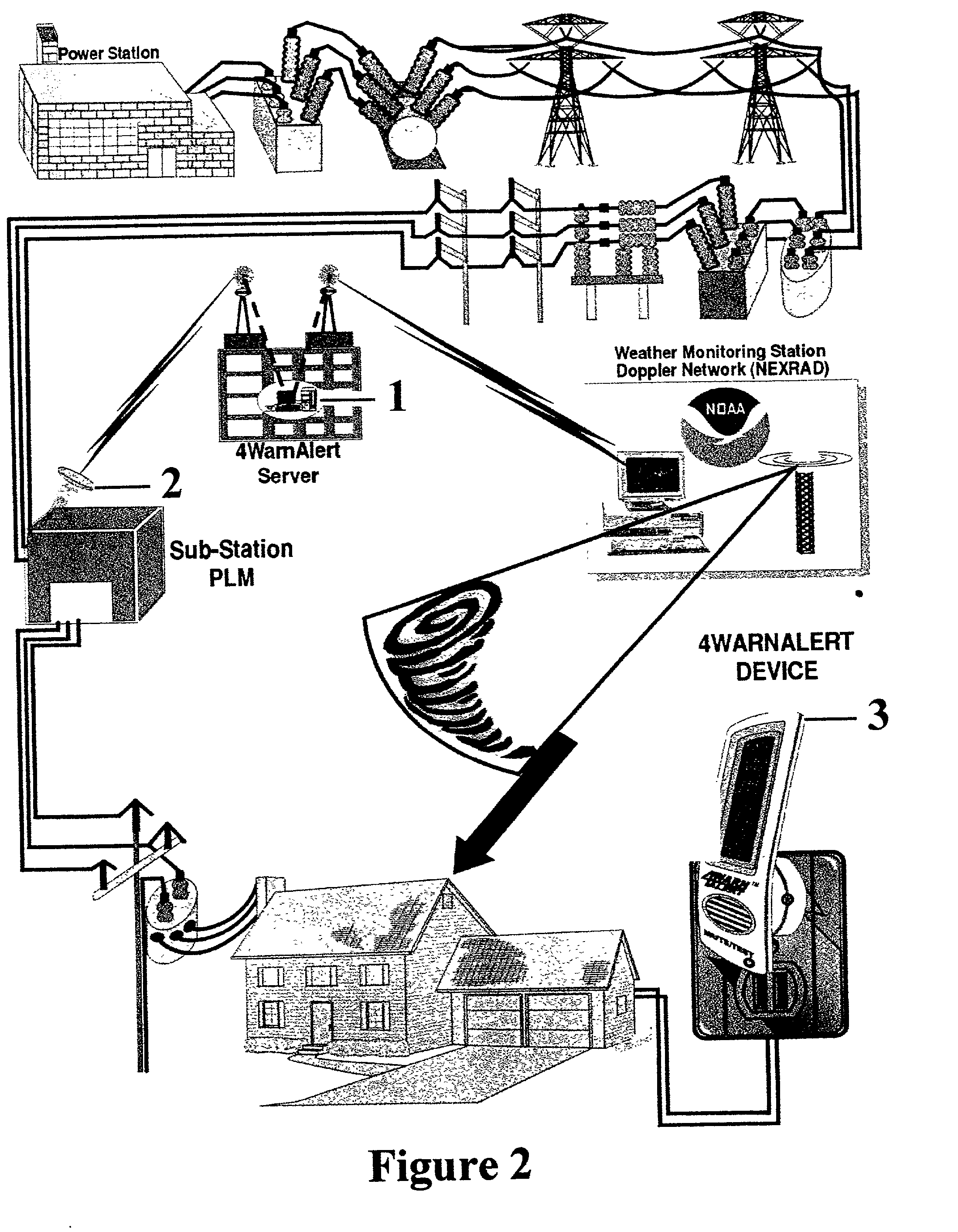Civil defense alert system and method using power line communication
a technology of civil emergency and alert system, applied in powerline communication applications, data switching networks, frequency-division multiplexes, etc., can solve the problems of fixed sirens, individual and community at their most vulnerable, fragmentation and degradation of the ability to communicate general or specific alarms to the public during civil emergency, etc., to achieve the widest possible coverage of the au, improve consumer safety, and ingenious flexibility
- Summary
- Abstract
- Description
- Claims
- Application Information
AI Technical Summary
Problems solved by technology
Method used
Image
Examples
embodiment
[0077] Main Embodiment
[0078] FIGS. 1 and 2 illustrate the operation of the main embodiment of the civil protection warning process system for a weather related civil emergency. The federal user agency, the National Oceanic and Atmospheric Agency (NOAA) or through its sub-agencies, the National Weather Service or the National Severe Storms Laboratory, detects the formation of a tornado. NOAA, as an authorized federal user of the 4WarnAlert warning process system, logs in to the gateway (1) software through a PC interface at its fixed location, a regional office. The gateway verifies that access is authorized for the user and that the IP address matches. NOAA can then select the locations or areas at risk and potential risk. NOAA would click on a map location to confirm identification by means of a graphical user interface--a computer generated map provided by the 4WarnAlert system process software and which is layered and scaled for zooming down to satellite and stereographic aerial ...
PUM
 Login to View More
Login to View More Abstract
Description
Claims
Application Information
 Login to View More
Login to View More - R&D
- Intellectual Property
- Life Sciences
- Materials
- Tech Scout
- Unparalleled Data Quality
- Higher Quality Content
- 60% Fewer Hallucinations
Browse by: Latest US Patents, China's latest patents, Technical Efficacy Thesaurus, Application Domain, Technology Topic, Popular Technical Reports.
© 2025 PatSnap. All rights reserved.Legal|Privacy policy|Modern Slavery Act Transparency Statement|Sitemap|About US| Contact US: help@patsnap.com



